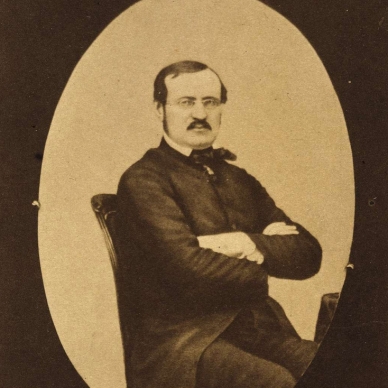Froment - Meurice

Froment- Meurice (1837 – 1913)
Froment-Meurice, Francois-Désiré (1802 – 1855)
Froment-Meurice, Émile (1837 – 1913)
The Parisian workshop dedicates itself primarily to the neo-Gothic style, creating pieces of jewellery in medieval forms that are very original and sculptural, often figurative.
Francois-Desiré Froment is born in Paris in 1802. His mother marries the jeweller Pierre Meurice after the premature death of Froment’s goldsmith father. Froment then takes his stepfather’s name.
After apprenticing as a chaser, Meurice takes over the family workshop in 1832 and quickly establishes his own reputation for the free and naturalistic shapes of his designs, which draw on the influences of the Mannerist and Baroque masters and Renaissance paintings, in particular the female form which features heavily in his jewellery designs within an architectural frame.
Froment-Meurice receives numerous awards for his work, including the title Orfèvre-joallier of Paris in 1849. After a hugely successful reception at the Great Exhibition in London in 1851, Froment-Meurice begins exhibiting more internationally, becoming one of the most famous gold and silversmiths of the 19th century.
From 1939 until his death, he works closely with Jules Wiése.
His untimely death in 1855 occurs just before the opening of the Exposition Universelle in Paris, widely considered to be the pinnacle of his success. His son Émile takes over the workshop until 1913. His works can still be seen today as some of the most celebrated museum exhibits, including the ceremonial cradle he created for the birth of Prince Imperial Eugène-Louis Napoleon, which today stands in the Carnavalet Museum, and an entire collection acquired by Queen Victoria and Prince Albert which is displayed at the South Kensington Museum in London.
His son Émile takes over the studio and keeps working there until 1913. The Paris Tiara, given to Pope Leo the XIII in 1888 by the city of Paris for his golden anniversary, is designed by Émile.
Froment- Meurice 1837 – 1913
Froment-Meurice, Francois-Désiré 1802 – 1855
Froment-Meurice, Émile 1837 – 1913
Die Pariser Werkstatt widmet sich vor allem dem Neo-Gotischen Stil und setzt mittelalterliche Formen sehr eigenwillig bildhauerisch oder figurativ in Schmuckstücken um.
Francois-Désiré Froment wird 1802 als Sohn des Goldschmiedes Francois Froment in Paris geboren. Seine Mutter heiratet den Partner ihrers früh verstorbenen Mannes, Pierre Meurice. Die Werkstatt wird unter dem Namen Froment-Meurice weitergeführt. Nach der Ausbildung zum Ziseleur übernimmt Francois-Désiré 1832 die Werkstatt und führt sie mit großem Erfolg. Auf den Werkschauen der Industrie Nationale 1839 gewinnt er die Silbermedaille und 1844 die Goldmedaille für Gotisch ispirierte Objekte. Von 1839 bis zu seinem Tod arbeitet er eng mit Jules Wiese zusammen.1851 stellt er erfolgreich in London aus und erhält die höchste Auszeichnung. Königin Viktoria von England kauft seine Stücke für ihre Privatsammlung. 1855 stirbt Francois-Désiré und erhält posthum die Ehrenmedaille der Pariser Weltausstellung. Sein Sohn Emile übernimmt 1859 die Firma und spezialisiert sich mehr auf kunstgewerbliche Objekte, denn auf Schmuck. 1867 gewinnt er die Goldmedaille, 1900 den Grand Prix auf der Weltausstellung in Paris. Die Werkstatt existiert bis 1907.
Fourment-Meurice ist einer der wichtigsten Gold und Silberschmiede des 19 Jahrhunderts. Sein Stil zeichnet sich durch die Formensprache der Gotik, der Renaissance
wie des Manierismus aus. Meisterlich setzt er seine Vorlagen, die meist aus der Malerei von 1400 bis 1600 stammen, in seinen Stücken um. Ganz typisch sind dafür etwa weibliche Formen in einer architektonisch anmutenden Fassungen. Er fertigt unter anderem die Wiege, zur Geburt des Thronfolgers Eugène-Louis Napoleon, die heute im Musée Carnavalet in Paris steht. Auch die „Paris Tiara“, die 1888 Papst Leo XIII. zum goldenen Jubiläum von der Stadt Paris erhält, ist ein Entwurf von Émile.